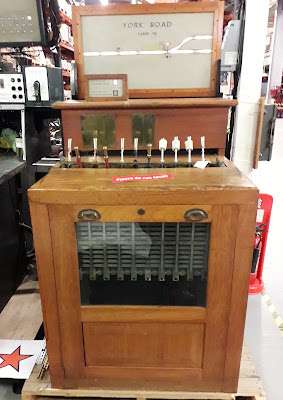Two museum visits in three days - Full PPE for me today.
This museum is outside of London, although not far, and is very different but still (sort of) transport related. It's many years since I've been to the Mosquito Museum - or the de Havilland Aircraft Museum as it is now known. A lot has changed since my last visit, but all for the better. An extra hanger has been built and a lot more aircraft have been added to the collection, but sadly many of them have to be left outside - which isn't good for their long term prospects. However, even sitting outside exposed to the elements is better than having already been scrapped which is what would have almost certainly been their fate otherwise - and although their long term future may be at risk at least people can still see and enjoy them for the time being. The rare Comet jet airliner fuselage has at least now been brought inside and restored in part to it's former glory - it was an empty shell kept outside last time I was here. This groundbreaking aircraft (the world's first jet airliner) was designed and built at the nearby factory in Hatfield. Sadly the historic de Havilland factory and airfield at Hatfield have now been allowed to slip into history. At one point there was a plan to at least open a museum on the site, but that fell through for some reason.
In spite of this museum's change of name, the main attraction of the place is still the famous Mosquito aircraft that were designed here at Salisbury Hall - two of the first three Mosquitos ever built were actually built and made their first flights from here to nearby Hatfield. Last time I was here there were only two Mosquitos on display, with another in pieces with the wings off in the very early stages of restoration. The prototype was already restored and on display in an all yellow paint scheme, but has since been further refurbished and repainted in camouflage. Now there are three complete Mosquitos on show - something you will not find anywhere else in the World. They are all kept safe in a hanger for future generations to enjoy.
There are also some other aircraft kept indoors, including a replica of a 1934 Comet racer - a completely different aircraft to the later jet airliner that shares it's name. There are a few parts of a de Havilland Sea Hornet on show - a wooden twin engined post war carrier based aircraft based on similar technology to the Mosquito, but on a smaller scale. These are the only surviving parts known to exist anywhere. Also on site are two Vampires - a jet fighter designed here at Salisbury Hall and first flown at Hatfield in 1943. Training aircraft are represented by the famous Tiger Moth biplane and it's post-war monoplane replacement the Chipmunk - both of which were built nearby at Hatfield. De Havilland continued into the jet age with the Venom - developed from the earlier Vampire. A far more advanced jet fighter on display is the mighty Sea Vixen also designed and built at Hatfield, although unfortunately this has to live outside at the mercy of the elements.
I'm afraid I didn't take any pictures of the aircraft indoors as it was late in the day and I was running out of time, but if you click on the links above they will take you to the museum's website where you can find pictures of all the aircraft on site (many more than I have mentioned) and also load of information about them. The museum staff are friendly and very knowledgeable - they are only too pleased to answer any questions you may have about the many and varied exhibits.I can highly recommend a visit to this museum - there is much more to see than I have mentioned, both inside and out. Not just whole aircraft - some of which you can go inside, but also engines and other associated equipment. There is also an excellent shop on site and free parking.




































